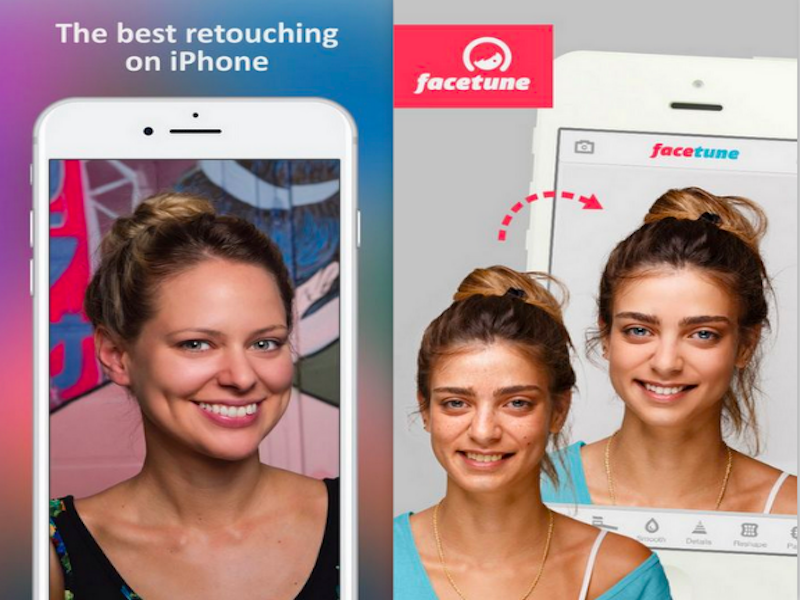
Anyone who likes to touch up their photos already knows how amazing Facetune is. Used even by celebrities, this photo editing app gives users tools to help them look their best with a few taps.
And even though the app has seen success (Apple named Facetune the #4 best selling paid iOS apps last year), its developer Lighttricks went on to launch the second generation of this title this past November.
The app has already been dowloaded more than 4 million times, quickly booming the next best thing for selfie lovers.
But those familiar with Facetune might wonder why Lightricks decided to launch another standalone app instead of adding new features to its preexisting app?
"We wanted to continue to bring state of the art stuff to the market," Itai Tsiddon, co-founder of Lightricks told Tech Times. "It's not some branding thing where you are taking the same stuff and your repackaging it. It's a completely new product."
While these are both impressive photo editing apps, there are some pros and cons to both titles. We put Facetune against Facetune 2 to reveal the main differences in the titles.
Here's how the apps stack up:
Facetune 2
Facetune 2 is the clear winner compared to the first generation title. It is the better app of the two to download for many reasons. First and foremost, it's free to download.
But it's real selling point is the amount of features that are available to users.
"If you check out the suite here, Facetune 2 has about 80 percent of what was available on Facetune 1 paid," Tsiddon said. "The number four best selling paid app, we give for free. And then, we give you five times that beyond the pay wall."
This includes one of its best and innovative features, the live editing tool, which allows users to make adjustments to their selfies in real-time before even snapping the photo.
Live editing is a must-use feature, but its since Lightricks developed new 3D modeling technology to power it, this means the tool isn't available for everyone.
"It doesn't even work on an iPhone 5 because it pushes the GPU and the CPU to the limits to squeeze the most processing power out of them," Tsiddon said. "It's literally things you couldn't do a few years ago."
Keep in mind that Facetune 2 is compatible for iPhone 5s and up and iOS 9 and up, it's just the more higher end features that are only available for recent iPhone models and the latest software.
Other free tools include the ability to Smooth the face, Whiten teeth, use Face to make the smile bigger, and lots of filters. Another major feature is the Relight tool, which brings the power of studio lighting that can be adjusted to users fingertips.
There is just so many features available that it would insane not to check the app out for those who are Instagram obsessed.
Compared to Facetune, it's even easier to use the tools with its sliding bar to adjust the amount applied to the photo. This means that users can master all the app has to offer after playing around with it a few times. The second generation app also provides tutorials for all the features to help users get familiar with these tools.
Facetune
Facetune already gives users with everything they need to create a flawless photo. It is extremely easy to navigate and use the editing tools, without feeling as overwhelmed by how to use all that Facetune 2 has to offer.
The only problem here is that Lightricks said the app only has so much room for new innovative features. Developing new tools that taps into the power of more advanced devices and their computing power costs money.
"To support this scale, there is only so much innovation you can cram into $4," Tsiddon said.
So while Lightricks could offer app updates to include performance improvements, over time it will become dated.
Facetune vs. Facetune 2: Price Wars
While Facetune 2 is essentially all of what Facetune offers plus more, besides the amount and kinds of features, the other main difference between the two is its payment models.
Facetune is a paid app, costing $3.99. This means a one-time payment to unlock all the editing tools.
But another reason why Lightricks decided to release a separate follow up app is because "the paid model has limitations" from a business perspective.
Facetune 2 follows the App Store's subscription model. This means it's free to download, giving users access to most of its tools. However, to get the best features and access to everything the app has to offer, users must pay for a subscription. In this case, it means an annual fee of $9.99.
Final Thoughts
At the time of its launch, Facetune was one of the best photo editing apps available. But now as more titles are released that include all kinds of new tricks to impress users, the app seems to have lost its sparkle. That being said, it's still a whole lots better and in a league of its own when going against other related titles.
These feelings come after using Facetune 2, which is life changing for selfie lovers. The amount of things a user can do with this app for free is amazing, but it's worth every penny spent to tap into the advanced toolbox. Best part is it doesn't feel intimidating to learn like Photoshop.
"We see an opening for a company that is kind of like what you think of Adobe for desktop—we'll do that for mobile," Tsiddon said. "We really wanted to continue to push the envelope to what technology can do on these devices."
Bet you that once a user checks out Facetune 2, they will never go without retouching photos with it again.
Try Wallpics for a High-Quality Photo Tiles That Stick & Re-Stick!
ⓒ 2025 TECHTIMES.com All rights reserved. Do not reproduce without permission.




